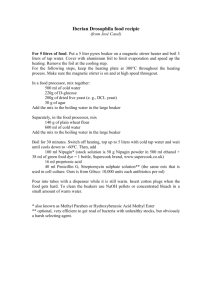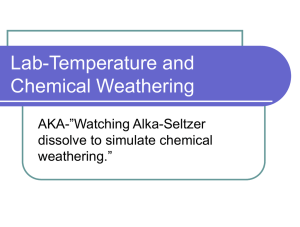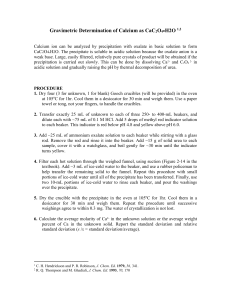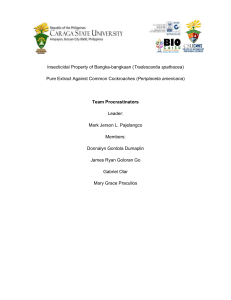IB 109
advertisement
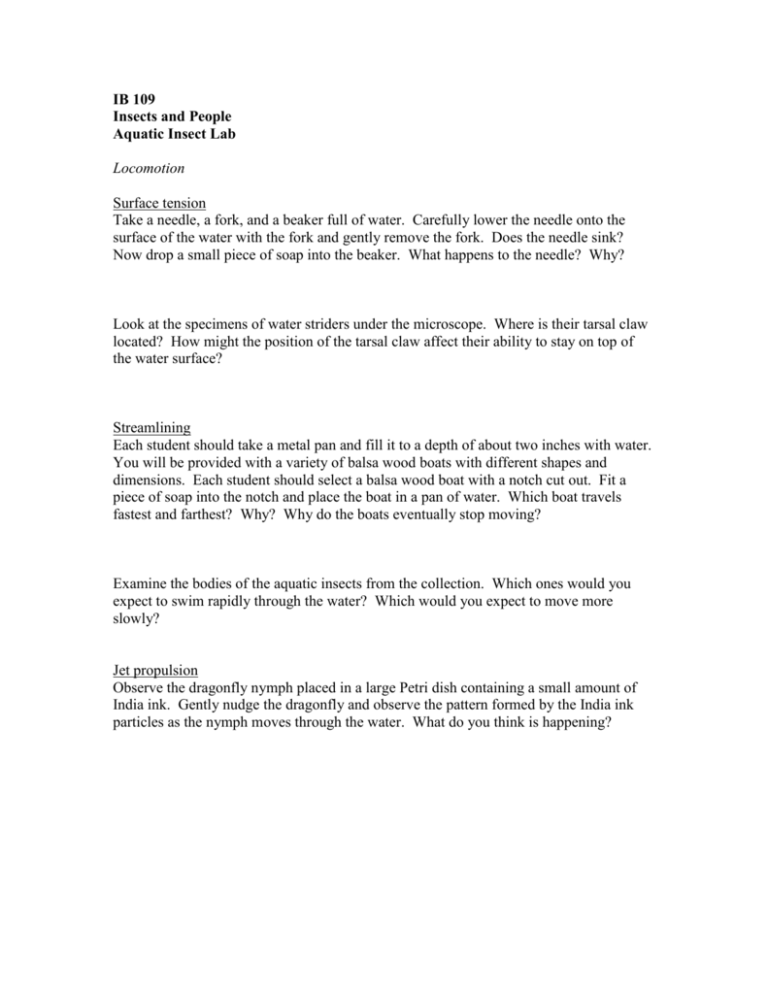
IB 109 Insects and People Aquatic Insect Lab Locomotion Surface tension Take a needle, a fork, and a beaker full of water. Carefully lower the needle onto the surface of the water with the fork and gently remove the fork. Does the needle sink? Now drop a small piece of soap into the beaker. What happens to the needle? Why? Look at the specimens of water striders under the microscope. Where is their tarsal claw located? How might the position of the tarsal claw affect their ability to stay on top of the water surface? Streamlining Each student should take a metal pan and fill it to a depth of about two inches with water. You will be provided with a variety of balsa wood boats with different shapes and dimensions. Each student should select a balsa wood boat with a notch cut out. Fit a piece of soap into the notch and place the boat in a pan of water. Which boat travels fastest and farthest? Why? Why do the boats eventually stop moving? Examine the bodies of the aquatic insects from the collection. Which ones would you expect to swim rapidly through the water? Which would you expect to move more slowly? Jet propulsion Observe the dragonfly nymph placed in a large Petri dish containing a small amount of India ink. Gently nudge the dragonfly and observe the pattern formed by the India ink particles as the nymph moves through the water. What do you think is happening? Respiration In the tanks are insects that use different methods for obtaining air while under water. Observe them and then select one species for closer observation. Take a stopwatch and time the intervals between trips to the surface for air. 1. Diving beetle: What order? How is air carried? How often does it travel to the surface? 2. Dragonfly nymph: What order? How is air carried? How often does it travel to the surface? 3. Water boatman: What order? How is air carried? How often does it travel to the surface? 4. Belastomatid: What order? How is air carried? How often does it travel to the surface? 5. Mayfly nymph: What order? How is air carried? How often does it travel to the surface? Dissolved oxygen and respiration Observe the mayfly/damselfly nymphs placed in two beakers. One beaker contains tap water (along with aquatic plant material); the other beaker contains water that has been boiled for ten minutes and then cooled to room temperature. In which beakers do the gills move more rapidly? Which beaker do you think contains higher amounts of dissolved oxygen? Sensory Perception Dorsal light reflex in backswimmers Remove a backswimmer from the tank and place it in a beaker of conditioned water (from the tank). Turn off the room lights and place the beaker on a ring stand. Shine a flashlight onto the beaker from above. How does the backswimmer orient? Now shine a flashlight from underneath. How does the backswimmer orient now? Morphology In which insects do you see the following structures: Plastron: Tracheal gills: Divided eye: Hind legs modified for swimming: References Kalmus, H., 1948. Simple experiments with insects. London: W. Heineman Ltd.


